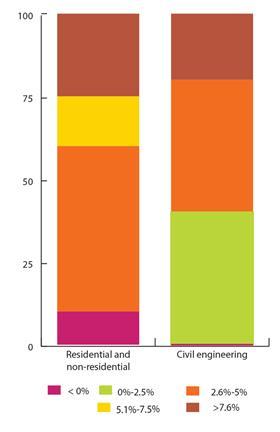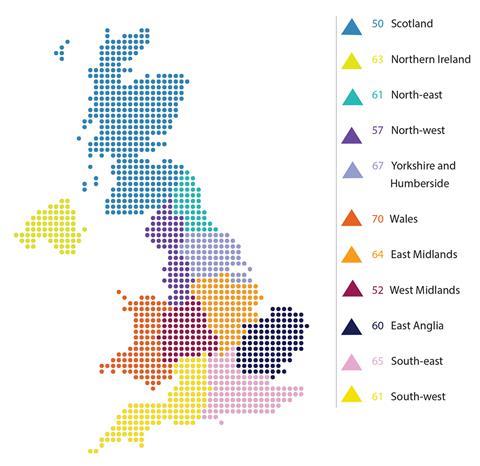Despite falling in January the construction activity index remains in positive territory, with the repair and maintenance sector reaching its highest value since July 2014
01 / State of play
The construction activity index remained in expansion territory in January, despite falling by eight points on a monthly basis to 52. In contrast, the repair and maintenance (R&M) one strengthened by nine points to 59 on the same measure, to reach its highest level since July 2014. Activity sentiment was generally positive at the subsector level. The civil engineering (50) and non-residential (53) ones both ticked upwards on a monthly basis, by one and two points respectively, whereas residential activity fell by the same amount to reach 54 points. The orders index continued to exhibit strength in January, standing at 64 points. It has now remained above the no-change mark for 34 consecutive months, thereby indicating continued demand side buoyancy. The tender enquiries index (57) fell but stayed firmly above the no-change mark. Its three-month moving average was unchanged at 62 points. The percentage of respondents reporting no constraints to construction activity increased slightly on a monthly basis to 20.8%.
Concerns regarding insufficient demand increased to 37.2%, the second highest level in the previous 12 months. The proportion of the panel reporting bad weather as a negative driver to activity remained relatively high at 13.5% in January. Those alluding to labour shortages fell to 6.8%, the smallest fraction from our panel since April 2014. Concerns regarding material/equipment shortages and finance both remained comparable to their December proportions, at 3.9% and 13% respectively. Other factors (issues that do not fall under any of the aforementioned categories) fell from 9.8% to 4.8% in January.
The employment prospects index at 52 ticked downwards by a point in January, just above its 12-month average. The percentage of respondents reporting no constraints to construction activity increased slightly to 20.8%.
02 / Leading construction activity indicator
In January the CFR’s Leading Construction Activity Indicator weakened by eight points to 52. This is the second successive month the indicator has been above the no change mark of 50. We expect the indicator to remain above this level in the next three months. The indicator uses a base level of 50: an index value above that level suggests an increase in activity, while one below it highlights a decrease.


03 / Labour Costs
During January 10% of non-residential and residential respondents reported falling labour cost inflation, up from 3.8% in October 2015. There was no reported labour inflation in the range of 0% and 2.5% from our panel. Half of the respondents experienced inflation between 2.6% and 5.0% in January. Meanwhile 15% outlined increases in labour costs between 5.1% and 7.5%. Finally a quarter of responses indicated increases greater than 7.6%.
04 / Regional perspectives

Experian’s regional composite indices incorporate current activity levels, the state of order books and the number of tender enquiries received by contractors to provide a measure of the relative strength of each regional industry.
All regions and devolved nations saw growth in their respective activity indices in January, moving on from December’s seasonally low base level.
Wales experienced the largest uptick, rising above the no-change mark for the first time since June 2015. Northern Ireland expanded to 63 points in the January, recovering from the previous month’s contraction. Yorkshire and Humber, at 67, regained some of the strength its index had lost at the end of last year. The East Midlands (64), East Anglia (60) and West Midlands (52), all expanded by eight points, with the West Midlands sitting above 50 for the first time since October 2014. The North-east (61) and North-west (57) strengthened by nine and 15 points respectively. Scotland improved by eight points but was the only index to not be in expansive territory, sitting at 50.
Despite growth regionally, the UK index which looks at firms in five more regions, edged down by a single point to 54. However, it has now been above 50 for the past three years.






No comments yet